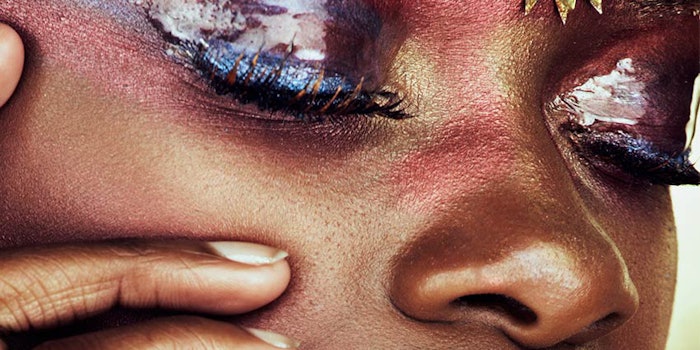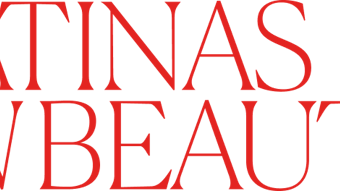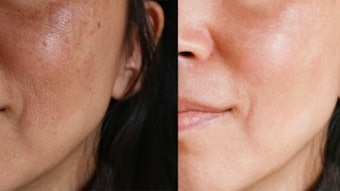
Despite multinational brands’ efforts to embrace the varying needs of different ethnic groups, their offerings continue to mainly target Caucasian consumers.
Meanwhile, the gaps for other ethnic groups are mostly addressed by niche players—examples being Bevel targeting the specific shaving needs of African men, and ORS and PAK cosmetics specializing in African beauty. The question is: How deep will multinational brands go in their attempt to develop coverage of multicultural beauty?
Traditional Cultural Focus Shifting
Caucasian consumers have historically received more attention due in part to their higher purchasing power, given that per capita spending on beauty in North America and Western Europe is nearly seven times more than that of Asia Pacific.
Yves Saint Laurent’s Le Teint Touche Éclat foundation launched 22 different shades of foundation to reflect the full range of skin tones from around the world after in-depth research.
Another reason for this discrepancy is that the leading global beauty companies have their origins in the Western markets and are more familiar with the needs of Caucasian consumers. The top seven companies in beauty are all Western companies and represent a combined share of 40% of the global beauty market.
But the Western markets representing Caucasian consumers are saturated, whereas non-Caucasian consumers, in Western and other regional markets, represent untapped potential for future growth, driven by rising purchasing power.
Intricate Fragmentation of Identities
Despite the opportunities, multicultural beauty is not a straightforward market, and defining its scope could be a challenge. In addition to race, variances in consumers’ preferences might be influenced by religion, tradition and environment.
There are numerous overlaps between races and customs and infinite variations within each of the individual groups, which could make multicultural beauty an intricately fragmented market, posing challenges for brands to address diversity to such an extent.
To keep it manageable, multinational brands scope multicultural beauty broadly on the basis of race, involving physical attributes, such as skin tone and hair type, and customary preferences, such as needs based on external environments and traditional habits.
The Cost of Full-spectrum Beauty
Targeting physical attributes on the basis of racial differences, however, could require more complex and, therefore, costly formulations, sometimes necessitating the use of rare and uncommon ingredients.
Foundation for Caucasian skin typically requires a maximum of three different shades, whereas non-Caucasian skin requires a far greater spectrum of shades. In addition, texture needs to be carefully engineered as products can be chalkier on certain non-Caucasian skin types. The issue of ethnicity is made even more complex by the fact that there is a wide variety of skin tones and hair types within each general ethnic group.
Tweaking the Message and the Product
Given the cost and intricacies of addressing multicultural beauty, multinational brands tend take a broad approach to optimizing their portfolios by tweaking the marketing message of existing products, depending on the target audience.
For example, Olay Total Effects in Asia Pacific is positioned as anti-pollution, due to a high level of antioxidants in the formulation, whereas in Western markets it is positioned as anti-aging. Some brands go a bit further and tweak formulations slightly on the basis of local preferences.
In the Philippines, Dial launched Coconut Water Soap and Body Wash, which also contains bamboo leaf extract. Coconut water and bamboo leaf extract are widely consumed in the market and revered for their health benefits.
Building New Multicultural Offerings
Although the bulk of offerings for non-Caucasian ethnicities involve using products from current portfolios, there are examples of multinational brands delving deeper.
For example, Yves Saint Laurent’s Le Teint Touche Éclat foundation launched 22 different shades of foundation to reflect the full range of skin tones from around the world after in-depth research spanning nine years and tests of more than 7,000 global skin tones; however, this was an undertaking of a massive scale, involving far greater financial risks. Hence, such cases are few and far between.
Multinationals can also build coverage in the multicultural beauty space through acquisitions. For example, L’Oréal made a number of acquisitions targeted toward specific ethnicities, including Carol’s Daughter and Niely. The company also acquired NYX Professional Make-up and Sayuki, whose offerings extend across all types of ethnicities. To date, L’Oréal is the only top multinational that seems to be highly active in such acquisitions.
Change Coming, Slowly
With growing market prospects and advancement in product technology, multinational beauty brands could be expected to push for greater coverage in multicultural beauty. However, in the short to medium term, this engagement will continue to be at the levels that allow the brands to optimize their portfolio offerings, while more specific consumer needs are likely to fall under the purview of niche brands.










